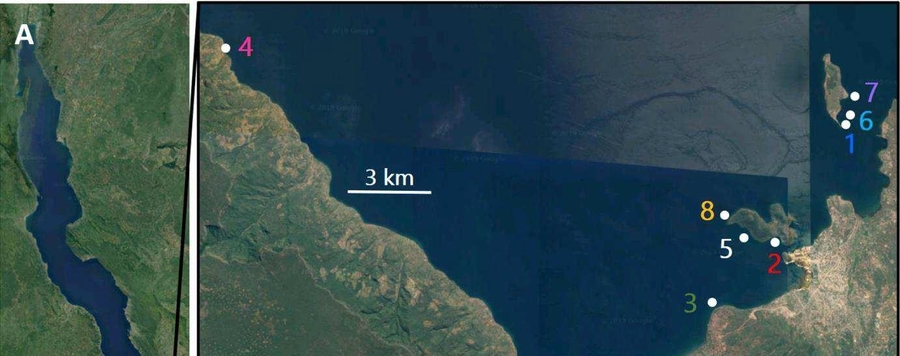
Ecological variation drives morphological differentiation in a highly social vertebrate
1. Animals may respond to ecological heterogeneity by genetic differentiation or phenotypic plasticity. Responses of organisms to their ecology can include adaptation at various levels of organization, including morphology, behaviour and social structure. Adaptations at one level might constrain or enhance adaptations on other levels, which highlights the importance of understanding their interactions.
2. In highly social animals, understanding the influence of ecology on the evolution and maintenance of complex social organization poses an intriguing challenge. Predation risk and habitat characteristics determine social structure in the cooperatively breeding cichlid Neolamprologus pulcher. Here we examine how varying combinations of these ecological factors across eightdistinct populations influence morphological differentiation.
3. We investigated the relationship between body shape and ecological parameters for 137 wildcaught individuals from eight distinct populations. Furthermore, we examined the genetic structure and differentiation among these populations using microsatellites. Finally, to disentangle heritable from plastic responses we raised two successive generations from six populations in the laboratory under common garden conditions and screened 188 individuals for morphological differentiation.
4. We found that body shape of N. pulcher strongly correlates with the measured ecological parameters. Low predation risk, low habitat structure and small shelter size favoured shallow bodies,
whereas at the opposite end of these environmental gradients deep body shapes prevail. These consistent morphological differences persisted over two laboratory-reared generations, revealing a heritable basis. In contrast to the significant effect of local ecology on morphological differentiation between populations, both geographic and genetic distance had little explanatory power, suggesting that morphological differentiation between populations is not a simple byproduct of genetic isolation. Remarkably, the largest difference in body depth emerged between the two populations located closest to each other, but differing strongly in their ecological niche.
5. These results highlight that morphological variation is a key component of local adaptation in neighbouring populations of a highly social species. Such morphological differentiation has the potential to influence individual cooperative behaviour, which will eventually feedback on group structure and mediate the evolution and maintenance of complex social systems.






